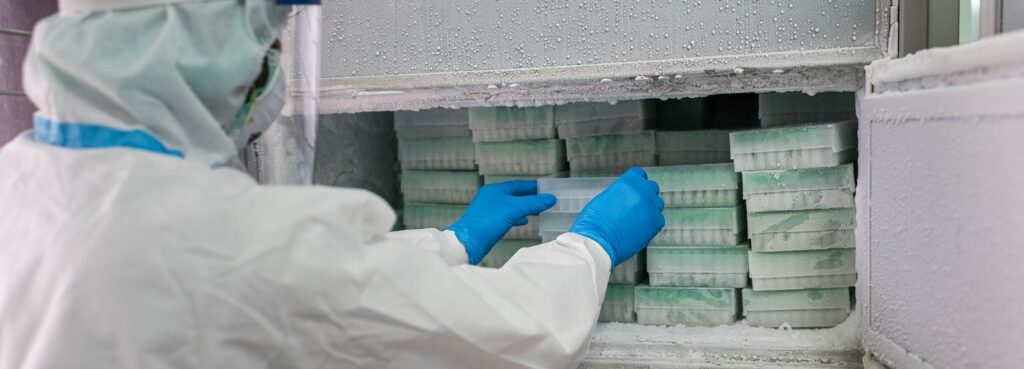Why so many Lyme disease patients slip through the cracks in our health-care system — and how we can prevent it
22% of patients with early Lyme need more treatment months later, but the vast majority don’t get it, U.S. study suggests.

Physicians need to do more follow-up with early Lyme disease patients to determine if they require more treatment, because more than one in five of them report ongoing symptoms months after their initial course of antibiotics, an American study suggests.
And even more concerning, in two thirds of the cases studied in which Lyme sufferers needed more care, they never got another appointment with a doctor, the authors say.
“Therefore, health-care professionals treating patients with early (Lyme disease) are encouraged to follow up with their patients, determine whether they continue to experience symptoms, and consider immediate antibiotic re-treatment as appropriate,” the team states.
The eight scientists studied 466 cases from 2014 to 2023 using blood samples from the Lyme Disease Biobank, a part of the Bay Area Lyme Foundation in the United States. The study included 253 participants who exhibited early symptoms — such as the erythema migrans rash, joint and muscle pain and fever — and who gave a blood sample before their initial antibiotic treatment and another three months later.
While 78 per cent of the participants had no signs of illness when the second sample was taken two to three months later, 22 per cent had ongoing symptoms, say the researchers, who published their findings in the July 2025 edition of Frontiers In Medicine, a U.S. journal.
But they found only 34 per cent of the latter group of subjects reported seeing a primary care physician for more treatment.
Citation
Horn, Elizabeth J, George Dempsey, Anna M Schotthoefer, Matthew McArdle, Allison F Weber, Cathy De Luca, Bobbi S Pritt, and Elizabeth L Maloney. 2025. “Lyme Disease Biobank: 10 Years of 3 Month Follow-up Visits from 2014 to 2023.” Frontiers in Medicine 12 (July). https://doi.org/10.3389/fmed.2025.1577936.
’Barriers to care’
“It is well established that barriers to care exist in the U S. … including lack of insurance coverage, health-care costs, travel time and distance to obtain care, and availability of care,” the article states.
The study’s results will sound all-too familiar not only to those south of the border, but also to the many patients with tick-borne illnesses who slip through the widening cracks in Canada’s health-care system, says Dr. Sarah Keating, a retired anatomic pathologist and a member of the board of directors for the Canadian Lyme Disease Foundation (CanLyme).
“It wasn’t surprising at all,” said Keating in a late September telephone interview. That’s why it’s so important that we do more research.”
Keating and other experts say the need for new approaches is all the more urgent as climate change continues to fuel the rapid expansion of disease-carrying ticks into the Maritimes and southern regions of Quebec, Ontario, Manitoba and British Columbia. That expansion, in turn, is touching off an explosion of Lyme disease and other tick-borne illnesses. Some experts estimate the actual number of Lyme disease cases alone is more than a dozen times higher than reported.
Keating, an associate professor emerita in the Department of Laboratory Medicine and Pathobiology at the University of Toronto, says many patients with tick-borne infections are in the same boat as more than six million Canadians: they don’t have family doctors. Many end up getting treatment in emergency wards or walk-in clinics where follow-up is rare.

She says even for those who are lucky enough to have doctors, physicians in primary care often aren’t well-versed in tick-borne diseases, their symptoms and treatment, and many don’t schedule follow-up appointments due to overburdened practices and lack of time.
“Right now, it’s kind of hit and miss how much your primary care provider is going to know about Lyme,” she says, adding that it’s a complex “multi-system disease” presenting many symptoms that mimic those of other conditions, making it difficult to diagnose and treat in just one short doctor’s appointment.
Lyme patients not taken seriously
Moreover, Keating says, there’s another reason why some people with these illnesses don’t return for more care when their symptoms persist beyond the initial course of antibiotics.
“You don’t think your provider is going to believe you …so you just don’t bother going.”
She says many Lyme patients tell the same story: doctors who can’t find the cause of their continuing illness tell them it must be due to some other cause, or worse, it’s all in their heads.
“Patients aren’t getting the help they need; they’re not being taken seriously,” Keating says.
”If patients thought they were going to be helped, and were going to be believed, there’d be a much higher percentage going back for follow-up.”
Canadian researchers have found evidence that the medical gaslighting Keating mentions isn’t just a problem for patients with tick-borne illnesses and is particularly prevalent for female patients.
She says the the study also illustrates how the failure to treat many of these cases effectively at an early stage is leading to more cases of chronic or “long Lyme” — a debilitating affliction that many patients battle for years before getting a proper diagnosis. The longer it persists, she says, the less likely any of these people will get effective treatment.
To the frustration of many long Lyme patients, there is still a debate among health-care professionals and researchers about whether the condition actually exists. A panel of top U.S. experts argues that it is indeed real, and has proposed the term “Lyme Infection Associated Chronic Illnesses (IACI)” to describe it.
A new specialty
Keating says the study underscores the need for health-care providers to take several measures to treat patients with tick-borne illnesses more effectively — the most obvious and straightforward being the scheduling of subsequent appointments to monitor their progress.
“When a patient presents with an acute tick bite and they’re treated with antibiotics, it would be prudent and even essential to follow up with them three months later and make sure they don’t have persistent symptoms,” she says.
But there’s a need for other more far-reaching reforms and innovations, Keating says, like having some doctors specialize in tick-borne diseases and the chronic illnesses that result, such as Lyme IACI.
“I think it needs to be a specialty unto itself because, with a few exceptions, the infectious disease doctors aren’t taking it on,” she says.
“The doctors(in this specialty)would have to be conversant with all these infections.”
Testing falls short
The study also casts more doubt on the effectiveness of the Standard Two-Tier Testing (STTT) protocol favoured by the U.S. Centers for Disease Control to diagnose Lyme disease, which is also the method used in Canada.
“These results provide additional evidence that STTT is insensitive” in detecting early Lyme disease, the researchers write.
As many experts have observed, the problem with the two stages of the test is they’re designed to detect the patient’s immune response to the bacteria that cause Lyme disease, not the pathogens themselves.

Many of the early symptoms appear before the immune system can produce antibodies to combat the infection, which means the STTT is prone to false negatives.
Modified versions of the testing protocol do a somewhat better job, the article says, but still often fail to detect the pathogens.
CanLyme joins many other experts in urging Canada to adopt more accurate testing methods already in use in other countries.
A Lyme disease biobank in Canada
Keating says the U.S. study and others like it demonstrate the need for a biobank in Canada to help find better ways to detect and treat Lyme disease, and other tick-borne illnesses in this country.
“This is the sort of research we can do here as well,” she says.
Biobanks collect large quantities of samples like blood, tissue, bone marrow, urine and DNA, along with the gathering of associated patient data. Researchers from many institutions can then use these resources to help find new screening methods, treatments, cures and ways to prevent a wide range of diseases.
”For us to be able to collect this sort of data in Canada would be very valuable and would inform how treatment needs to advance and improve in our health-care system, which is not doing a very good job,” Keating says.

“In addition to studies like this using biobank blood samples, research on samples from human tissue would be invaluable to determine where in the body the organisms are harboured and whether or not they persist after different treatment protocols.”
But Keating also says health-care providers in Canada need to find better ways to treat patients with chronic symptoms now, while research into the causes continues.
”We don’t know exactly what’s happening with these patients that have persistent infection, but we’ve got to help them. We can’t wait to understand it fully; that could take 20 more years,” she says.
”In the meantime, people are suffering and if we know certain treatments help them, we have to treat them that way.”
